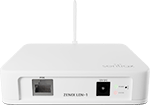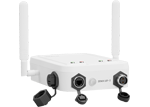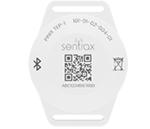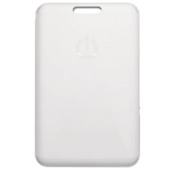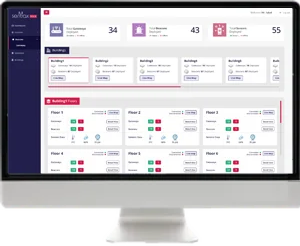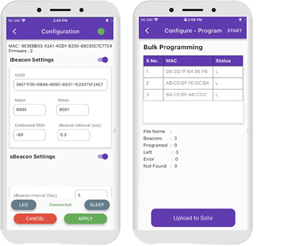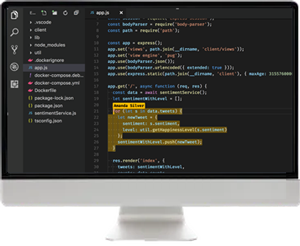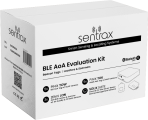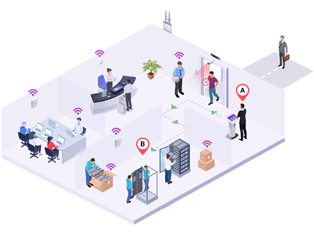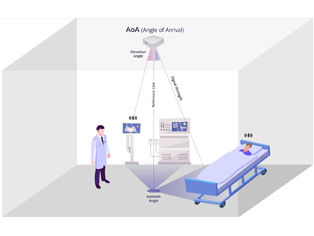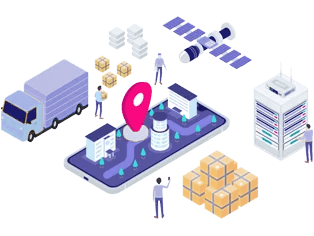- Scanners/Locators
BLE RSSI Scanners & Locators
BLE (RSSI) based indoor locator and gateway that provides proximity positioning, presence & environmental sensing.
BLE (RSSI)-based indoor locator and gateway that provides proximity positioning.
BLE (RSSI)-based outdoor locator and gateway that provides proximity positioning with Wi-Fi, LTE connectivity, and GPS positioning.
BLE AoA Scanners & Locators
BLE (AoA)-based indoor locator and gateway that provides precise submeter location tracking.
BLE (AoA)-based outdoor locator and gateway that provides precise sub-meter location tracking.
- Beacons/Tags
BLE (AoA) Asset Tag with Multi-Sensors
Hybrid BLE (AoA) & (RSSI) Asset Tag
Smart Badge BLE (AoA) Tag with Temperature Sensor
Outdoor Anchor BLE Beacon Tag with Internal Temperature Sensor
BLE (RSSI) Wearable Bracelet Beacon Tag for Persons Positioning
Indoor Anchor BLE Beacon Tag with Temperature Sensor
- Software
SENTRAX’s versatile platform for asset and personnel management, available in API, on-premise, and cloud-based versions.
Simplifies and enhances the configuration & management of BLE beacon tags, available on both Android and iOS.
Provides a versatile set of functionalities to support location-based systems in various smartphone applications, facilitating indoor positioning.
- Evaluation Kit
BLE (RSSI) Evaluation Kit for real-time proximity positioning and tracking of nearby assets and personnel. Try this evaluation kit for deployment and testing.
BLE (AoA) Evaluation Kit for precise real-time positioning and tracking of assets and personnel. Try this evaluation kit for deployment and testing.
Technology Comparison: RTLS Technologies for Business – BLE vs. UWB vs. RFID

1. Introduction to Real-Time Locating Systems (RTLS):
In today's dynamic business landscape, Real-Time Locating Systems (RTLS) have become indispensable tools
for organizations seeking to gain a competitive edge. RTLS technology automatically identifies and tracks the
precise, real-time location of assets, inventory, or personnel within a defined environment. By leveraging
wireless communication between tags attached to items and strategically placed receivers, these systems
Provide immediate visibility of location data on a centralized platform. This capability empowers businesses
across diverse sectors to make informed decisions, optimize operational efficiency, enhance safety protocols,
and reduce costs. From streamlining workflows in manufacturing and logistics to ensuring patient
safety in healthcare and enhancing customer experiences in retail, RTLS offers a powerful solution for
improving overall operational intelligence.
2. Overview of RTLS Technologies
2.1. Bluetooth Low Energy (BLE):
BLE operates in the 2.4 GHz band, known for its low power consumption and ability to function for extended
periods on small batteries. With an indoor range of 10-40 meters, BLE offers location determination through
Received Signal Strength Indication (RSSI) for meter-level accuracy. Newer versions like BLE 5.1 incorporate
Angle of Arrival (AoA) for significantly improved sub-meter accuracy (0.1-1m). BLE supports data rates up to
2 Mbps. In RTLS, BLE systems use beacons or tags that broadcast signals detected by gateways or scanners.
Location is estimated via signal strength (RSSI) or angle of arrival (AoA), processed by RTLS software to
provide real-time location data.
2.2. Ultra-Wideband (UWB):
UWB operates across a broad frequency spectrum (3.1 to 10.6 GHz) with a bandwidth of at least 500 MHz. It
excels in high accuracy, achieving centimeter-level precision (10-30 cm), with a range of 1-50 meters (up to
200m in optimal conditions). UWB supports high data rates (up to 27 Mbps) and low latency (<1ms). It
primarily uses Time-of-Flight (ToF) measurements to calculate distance. UWB RTLS involves tags and
anchors, with location determined by the time it takes for signals to travel between them.
2.3. Radio-Frequency Identification (RFID):
RFID uses radio waves to identify and track objects with attached tags. Passive RFID tags are powered by the
reader's signal and have a limited range (up to a few meters), while active RFID tags have their own power
source, enabling longer ranges (up to 100m). Passive RFID provides point-in-time location, whereas active
RFID offers room-level or zonal accuracy. In RTLS, passive RFID is used at choke points, while active RFID
involves tags broadcasting signals to readers.
3. Comparative Analysis:

The table above shows the comparison of three key RTLS technologies: Bluetooth Low Energy (BLE), Ultra
Wideband (UWB) and Radio-Frequency Identification (RFID), guiding businesses in selecting the most
suitable solution based on accuracy, cost, scalability, and use case. While each technology has its merits,
BLE emerges as a strong contender for a wide array of RTLS applications due to its compelling balance of
accuracy, cost-effectiveness, and scalability.
4. Advantages of BLE Technology in RTLS Applications:
BLE offers significant advantages for various RTLS applications:
● Asset Tracking: BLE provides a cost-effective balance of accuracy for tracking a wide range of assets in
offices, hospitals, and retail environments. Its low cost and long battery life minimize operational
overhead.
● Indoor Positioning: BLE excels in indoor positioning & navigation, direction finding, and location-based
services due to its ease of deployment, affordability, and widespread compatibility with smartphones.
Advancements in Angle of Arrival (AoA) have further enhanced its precision.
● Person Tracking: Wearable BLE tags enable cost-effective person tracking in healthcare and manufacturing, enhancing safety with features like panic buttons and geofencing.
5. Sentrax GmbH: Leading the Way with BLE-Based RTLS Solutions
Sentrax GmbH specializes in advanced BLE RTLS and IoT sensor systems. Our focus on BLE technology
allows us to offer cutting-edge solutions for accurate real-time positioning and tracking in smart buildings,
healthcare and manufacturing. Sentrax provides both BLE RSSI for proximity tracking and BLE AoA for sub
meter accuracy.
5.1. Sentrax's Strengths in BLE RTLS:
Sentrax offers advanced BLE-based real-time location solutions with sub-meter accuracy (0.5–1m), leveraging
Angle of Arrival (AoA) technology through its ZENIX LON-2 and ZENIX LOF-2 locators, in combination
with BLE tags such as the PINIX TOW-5, PINIX TOW-1, and PINIX TOK-1. For RSSI-based positioning,
Sentrax provides the BLE RSSI Kit, which includes ZENIX LEN-2 and ZENIX LEN-1 scanners, along with
the PINIX TEP-1 tag. The previously mentioned tags are also compatible with RSSI scanners, ensuring a
flexible and cost-effective solution for accurate real-time tracking.
The SOLIX RTLS Platform underpins these offerings, providing scalable and seamless integration across
diverse environments such as smart buildings, healthcare, and industrial facilities. Key features include AoA
locators and RSSI scanners, BLE tags equipped with integrated sensors (e.g., temperature and motion
detection), and an intuitive setup process supported by comprehensive evaluation kits. Sentrax emphasizes ease
of deployment, high precision, and strong adaptability, making its solutions ideal for mission-critical
positioning applications.
6. Conclusion:
While UWB excels in high accuracy and RFID is suitable for basic identification, BLE offers a superior
balance of accuracy, cost, and scalability for a wide range of RTLS applications. The increased accuracy of
BLE with AoA technology further strengthens its position, and Real-Time Locating Systems (RTLS) are vital
for businesses aiming to optimize operations, enhance safety, and boost efficiency.
Sentrax GmbH stands out as one of the leading providers of effective BLE-based RTLS solutions, offering aa
comprehensive suite of products tailored to meet diverse business needs in asset tracking, indoor positioning,
and person tracking.



